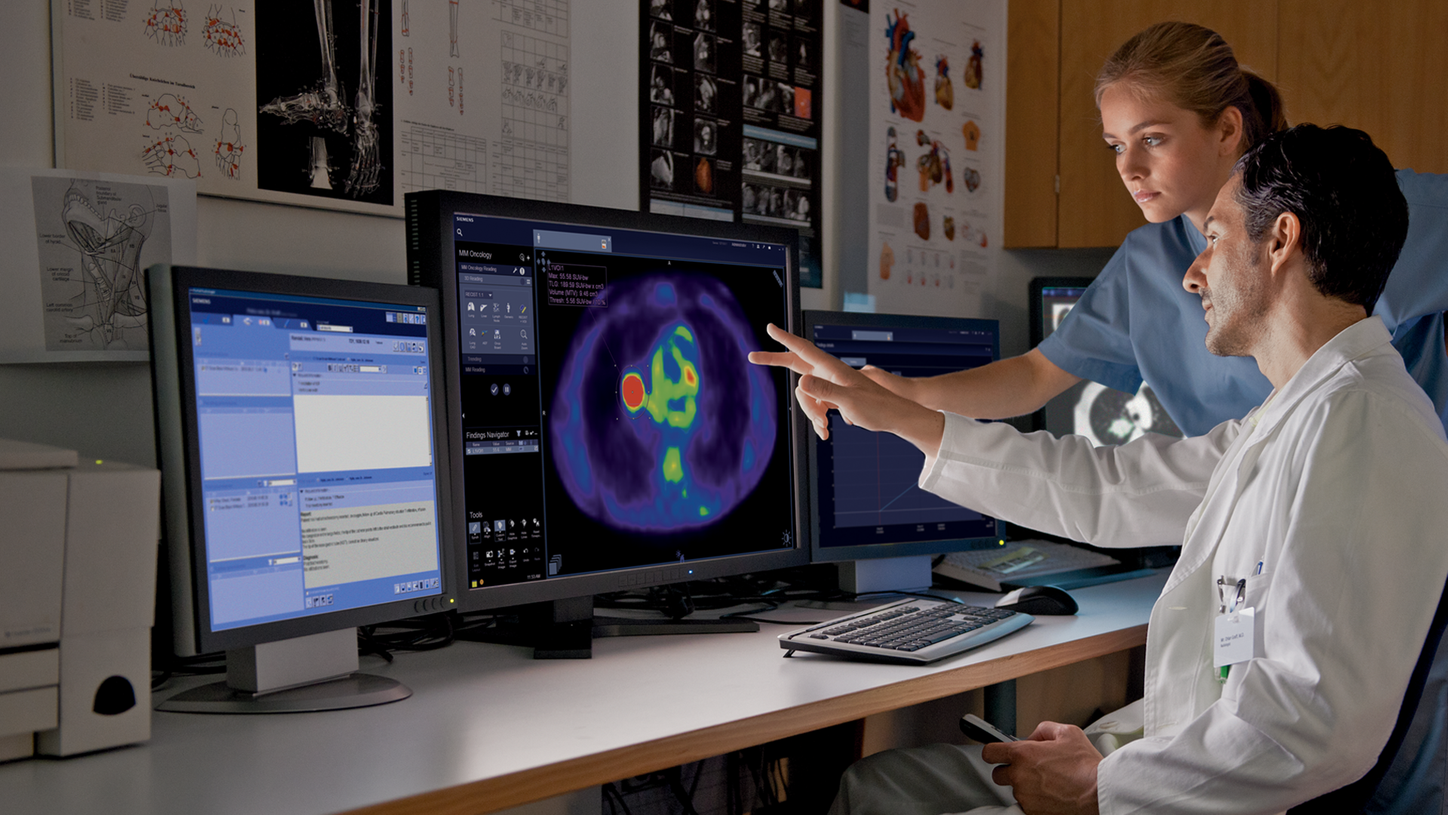syngo®.via is an intelligent imaging software for multi-modality reading that helps you master growing amounts of imaging data in less time. Whether you want to read PET/CT, SPECT/CT, SPECT, planar, CT, MR, mammography, angiography, ultrasound exams, or perform radiation therapy planning, syngo.via offers efficient tools on one platform.

Prepare - Take the work out of workflow
We designed syngo®.via to help bring the highest possible diagnostic accuracy and efficiency to your department.
syngo.via’s unique combination of multiple smart technologies provides a level of automation that eliminates many of the manual pre-processing steps.
- Pre-fetching automatically loads prior examinations onto syngo.via and combines them with the current exam in SMART Layout, before you open a patient file.
- ALPHA Technology automatically correlates studies based on individual organ recognition and aligns them for more precise registration and easier evaluation.
- SMART Layout automatically opens the appropriate application in your preferred layout and displays the necessary tools.
- Findings Navigator lets you see all previous findings within a case as soon as the case is displayed. Previous findings can be propagated to your current exam, allowing you to quickly compare patient studies.

Read - Get the most out of your image, faster
syngo.via includes applications that support fast and accurate evaluations for both PET and SPECT.
- Oncology Our multi-modality oncology application includes an array of features that help master increasing amounts of imaging data while supporting consistent measurement accuracy, including the latest functionality for viewing and interpreting multiparametric images and calculating Deauville score in lymphoma.
- Cardiology syngo.via delivers the same consistent user experience for faster workflow, regardless of which modality or isotope you employ. Additional CT tools support your ability to interpret multimodality cardiology scans in a single platform.
- Neurology Benefit from quantitative guidance for disease assessment, especially for borderline cases. Dedicated neurological quantification algorithms help you identify problems by comparing patient exams against a population database of normal, healthy brains, and comparing exams over time, including the latest functionality for PET tracer quantification in striatal analysis.
- General nuclear medicine Create and save automated workflows and process datasets using the same interface. Once you’ve created a specific workflow, you can automate and replicate it—saving time and improving diagnostic confidence.

Share - Collaborate across departments
syngo.via for MI offers a unique set of tools to help you translate data findings into concise reports designed to enhance collaboration both online and in person, including the latest functionality—PET/CT and SPECT/CT hybrid volume rendered technique (VRT) to enable 3D visualization of disease in a single image.
Structured reports
Findings and measurements are automatically collected in disease-specific report templates. The syngo.via report can be distributed to PACS or sent via an HL7 interface to an information system.
WebViewer
Accessible from standard mobile devices, WebViewer makes it is easy to share information and 3D images with referring physicians, as well as other departments and patients, wherever they are located.
OncoBoard
A dynamic, offline method for discussing cases onsite or on-the-go, even for locations without a syngo.via or a network connection. OncoBoard runs a fully interactive, shareable application from a single USB drive

Scale - Find your best fit — for today and tomorrow
Highly flexible, syngo.via for MI can be configured to meet your clinical, operational and financial needs. syngo.via’s scalability lets you easily expand as your capabilities grow.
- Multi-modality server for any number of applications and number of users
- Multi-modality workstation for any number of applications and one or two users
- Molecular Imaging workplace for MI applications and one user
- Multi-modality applications
